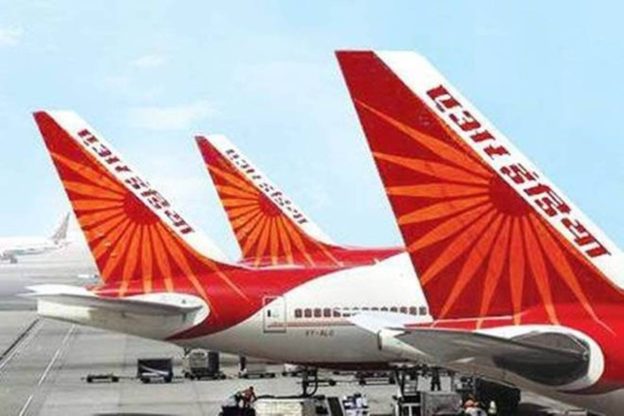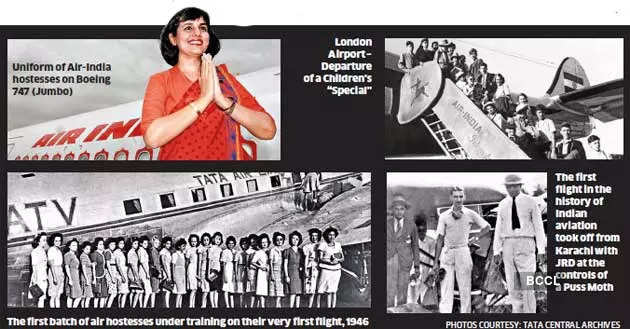Bombay House will also need to ensure that it has enough management bandwidth to spare, given the intense focus that will be needed on the super app that’s in the works following the acquisition spree in the digital space.
The Tata Group will face one of its biggest business challenges in trying to make the Air India acquisition work, given its chequered record on this front. Some of its blockbuster overseas investments are still a work in progress.
The purchase of Jaguar Land Rover was probably among the better bets made by the group but the unit does yoyo from profits to losses in an industry where market dynamics keep shifting, owing to technological transformations as well as geopolitical and other factors, including Brexit. Disruptors such as Tesla and Chinese carmakers are forcing heavyweight incumbents to change course.
At the time of Tata’s JLR acquisition, Chinese company Geely had acquired Volvo from the same owner, Ford Motor Co., and had acquitted itself better. The local Chinese market and a resurgence of the brand in the US market enabled Geely to make that impressive turnaround. Volvo is currently in the news for an initial public offering (IPO) at a valuation of $25 billion.
The fate of other Tata acquisitions has been modest. The purchase of Tetley by Tata Consumer and Brunner Mond Group UK by Tata Chemicals hasn’t changed the fortunes of the acquirers much. However, close to home, Bhushan Steel has done exceptionally well, mostly because of the current commodity supercycle. The company was acquired in bankruptcy proceedings.
That needs to be set against Corus’ experience. Acquired in 2007 for more than $12 billion, the European steelmaker was expected to add heft. But it didn’t pan out as the global financial crisis of 2008 and then the commodity crisis of 2016 saw the group mothballing and selling plants in the UK. A plan to form a joint venture with Thyssenkrupp was blocked by the European Commission in 2019, forcing the Indian conglomerate to look at other options, including government support. However, the ongoing commodity supercycle has given the group some breathing space and it’s looking to fast track debt repayments.
Bombay House will also need to ensure that it has enough management bandwidth to spare, given the intense focus that will be needed on the super app that’s in the works following the acquisition spree in the digital space. To be sure, on the aviation front, it has a solid partner in Singapore Airlines (SIA). Vistara is a joint venture between the two. Although SIA didn’t participate in the Air India bid, the plan is to integrate the network of the national carrier with that of Vistara.
The Tata Group’s return to civil aviation through AirAsia India and Vistara has been a modest effort so far. In FY21, they posted a combined loss of more than Rs 3,200 crore. The combined domestic market share of all three, including Air India, after synergies would be less than 25%, against market leader IndiGo’s 57%. The three carriers will have a combined fleet of about 227 aircraft against IndiGo’s 257. Vistara mostly has narrow-bodied Airbus A320s while Air India has wide-bodied, long-range aircraft.
According to a recent ET Prime report, Tata executives discovered during due diligence that Air India was paying exorbitant rentals on several planes, has onerous maintenance contracts, aircraft that badly needed cabin upgrades, engines that haven’t been overhauled in nine years and thousands of excess staff, many of whom are entitled to free air travel.
Former Air India director finance S Venkat estimates Tata may have to pay $2-5 million to refurbish aircraft. Another key challenge will be transforming the work culture at Air India, with all the flaws of a government-run entity and few of its positives.
“This deal could be a challenging acquisition by the Tata Group, as it would take a lot of money as well as people, who would have revived an airline as huge as Air India, to be able to bring this airline on the path of recovery,” said an aviation industry expert. “I hope it does not become the albatross around the neck for the Tata Group.” He added such deals have a lot of known unknowns, which is the easy part. “In the case of Air India, there are various unknown unknowns and that will complicate the situation for the Tata Group,” he said.
The Vistara board had in FY18 informed both its promoters that there was no benefit in buying an older airline with legacy issues such as Air India or Jet Airways, said a person with knowledge of the matter.
“The solution offered was to wait for the airline to shut shop and fill in that space by adding new planes,” said the source.
Vistara did try to fill the space created after Jet Airways was grounded by adding Boeing aircraft, which it continues to operate, he said.
Global Bailouts
The International Air Transport Association (IATA) lobby group pegs 2021 losses at nearly $52 billion, less than the $138 billion lost in 2020. Losses will further shrink in 2022, to about $12 billion, said IATA director general Willie Walsh at its recent annual general meeting.
“In total, the Covid-19 crisis will cost aviation $201 billion in losses before we return to profitability in 2023,” he said.
In April, the Donald Trump administration in the US agreed to a bailout package of $25 billion for the American airline industry. This was to help 11 carriers including Alaska Airlines, Allegiant Air, American Airlines, Delta Air Lines, Frontier Airlines, Hawaiian Airlines, JetBlue Airways, United Airlines, SkyWest Airlines and Southwest Airlines pay their workers.
Last month, his successor Joe Biden made available $482 million for aviation manufacturers to avert job losses and pay cuts. German carrier Lufthansa received 9 billion euros from the government last year. It recently announced a rights issue to raise 2.14 billion euros to partly pay back the state.
In March 2020, Singapore Airlines said it received $13 billion in aid from the government to see it through the Covid crisis.
https://cfo.economictimes.indiatimes.com/news/air-india-acquisition-bombay-house-will-face-one-of-its-biggest-business-challenges-to-make-its-aviation-dream-fly/86884911






